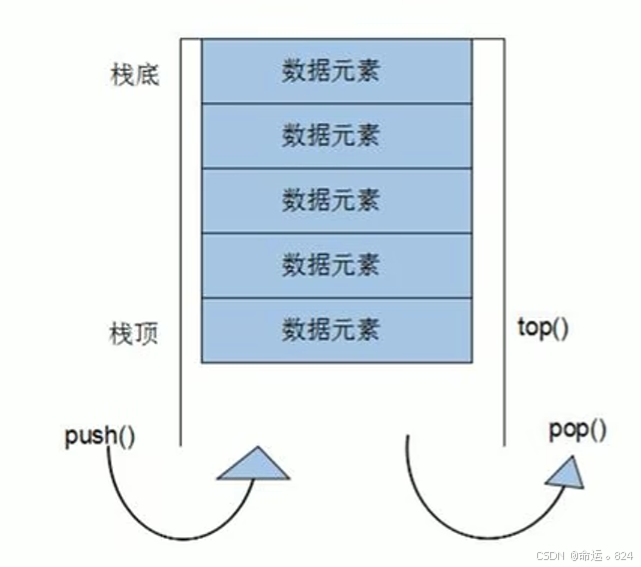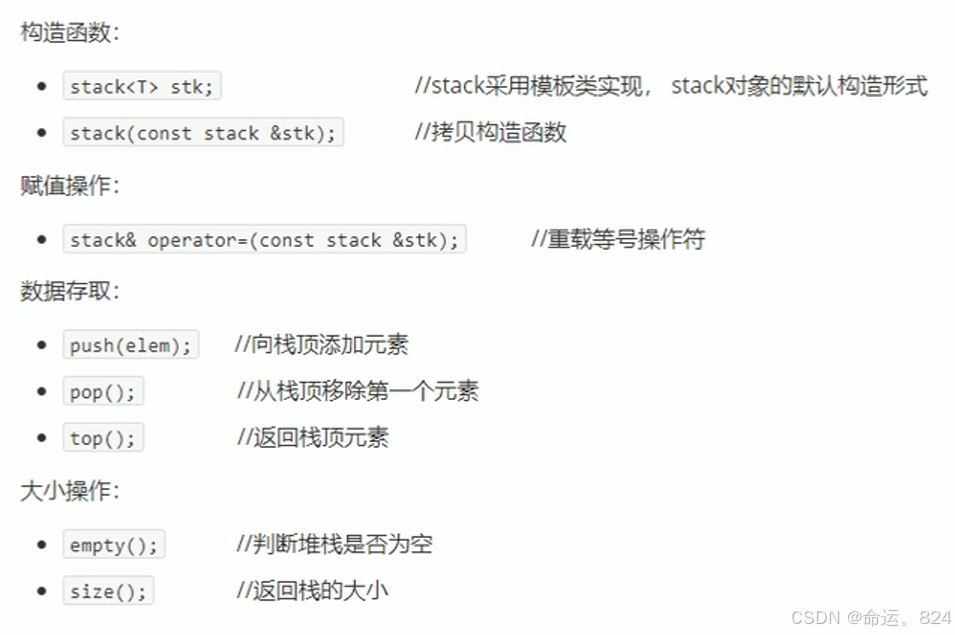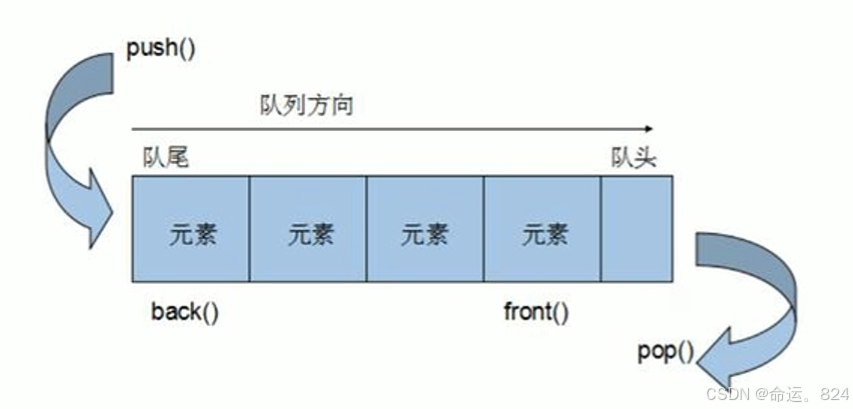1.stack的基本概念:stack是一种先进后出的数据结构,只有一个出口,栈中只有栈顶的元素才可以被外界访问,因此栈不允许有遍历行为
栈中进入数据叫——入栈
栈中弹出数据叫——出栈
2.stack的常用接口
void test01()
{
stack<int> st;
st.push(10);//入栈
st.push(20);
st.push(30);
st.push(40);
st.push(50);
while (!st.empty())//只要栈不为空,打印栈顶元素和栈的大小
{
cout << "栈顶元素为:" << st.top() << endl;
cout<<"栈的大小为:" << st.size() << endl;
st.pop();//出栈
}
cout << "栈为空,栈内的大小为:" << st.size() << endl;
}1.queue的基本概念:queue是一种先进先出的数据结构,它有两个出口
queue容器中允许一端新增元素,从另一端删除游戏
queue中只有队头和队尾才可以被外界访问,因此queue不允许有遍历行为
队列中进数据叫——入队
队列中出数据叫——出队
2.queue的常用接口
class Person
{
public:
Person(string name,int age)
{
this->m_name = name;
this->m_age = age;
}
string m_name;
int m_age;
};
void test01()//queue队列操作
{
queue<Person> q;
Person p1("唐僧", 20);
Person p2("寻悟空", 2000);
Person p3("猪八戒", 800);
Person p4("沙僧", 700);
q.push(p1);//入队
q.push(p2);
q.push(p3);
q.push(p4);
cout << "队列的大小为:" << q.size() << endl;
while (!q.empty())//不为空,输出队头和队尾
{
cout << "队头:姓名:" << q.front().m_name << " 年龄:" << q.front().m_age << endl;
cout << "队尾:姓名:" << q.back().m_name << " 年龄:" << q.back().m_age << endl;
cout << "队列大小为:" << q.size() << endl;
q.pop();//出队
}
cout << "队列大小为:" << q.size() << endl;
}


